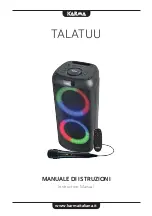
15
GB/IE/NI
Electronic and electrical safety
equipment
Persons with cardiac
pacemakers or hearing aids
Measurement and calibration
devices
Noise immunity of other
devices in the vicinity
The time of day at which the
cutting work is performed.
The following is recommended
to reduce possible interference
radiation:
the plasma cutter must be
regularly maintained and kept
in good condition
Cutting cables should be com-
pletely unwound and installed
parallel on the floor, if possible
Devices and systems at risk of
interference radiation must be
removed from the cutting area
if possible, or shielded.
• General plasma
explanations
Plasma cutters are operated by
pushing pressurised gas, e.g.
air, through a small pipe. In the
centre of the pipe, there is a
negatively charged electrode that
is directly above the nozzle. The
vortex ring causes the plasma to
rotate quickly. If you supply the
negative electrode with current
and make the tip of the nozzle
touch the metal, this connection
creates a closed, electrical circuit.
A powerful spark occurs between
the electrode and the metal.
While the gas flows into the
pipe, the spark heats up the gas
until it has reached the plasma
condition. This reaction causes
a current from the controlled
plasma with a temperature of
16,649 ºC or more that moves at
speed of 6.096 m/sec and the
metal transforms into steam and
molten discharge. The plasma
itself conducts electrical current.
The working circuit that allows
the arc to occur remains as long
as current is supplied to the
electrode and the plasma remains
in contact with the metal to be
processed.
The cutting nozzle has a range
of further channels. These chan-
nels generate a constant flow of
shielding gas around the cutting
area. The pressure of the gas
flow controls the radius of the
plasma jet.
NOTE!
f
This machine is only designed to use
compressed air as “gas”.
373212_2104_Plasmaschneider_PPS_30_B2_content_LB6_GB.indb 15
373212_2104_Plasmaschneider_PPS_30_B2_content_LB6_GB.indb 15
15.09.2021 10:33:39
15.09.2021 10:33:39
















































